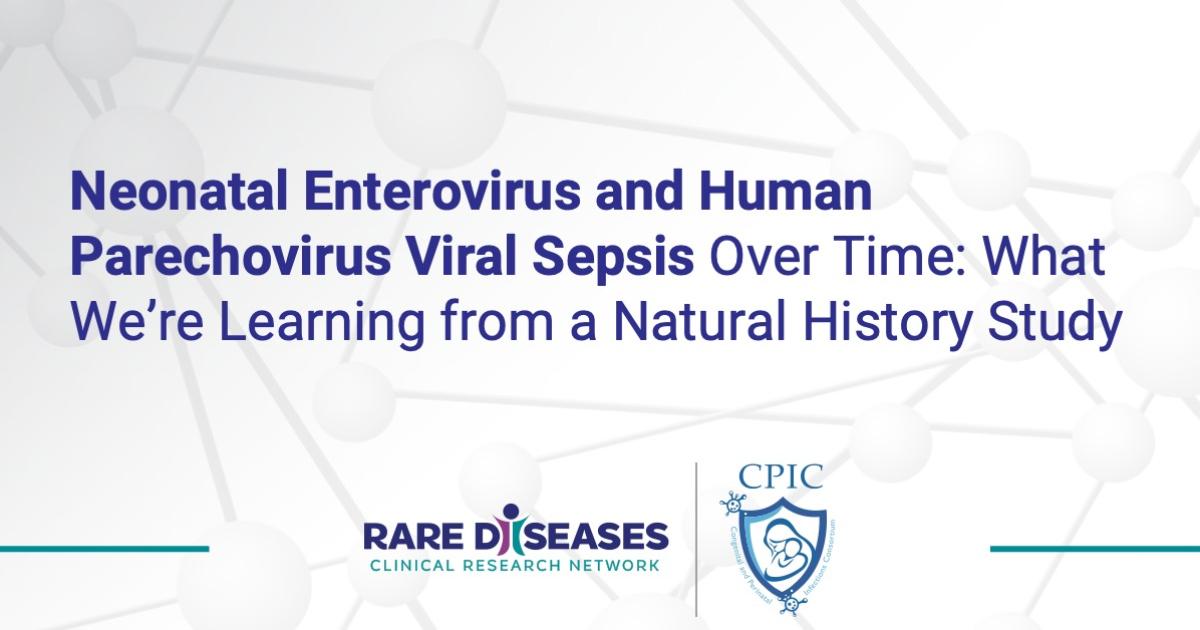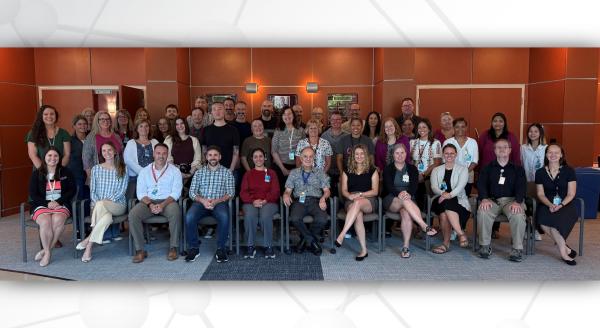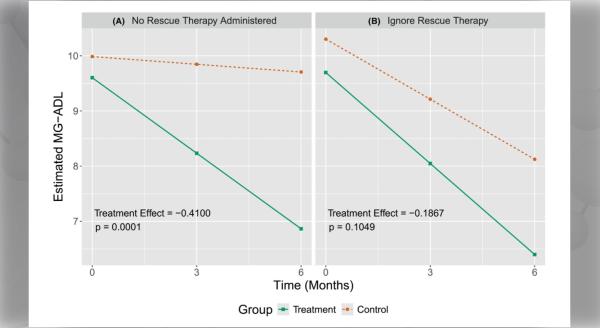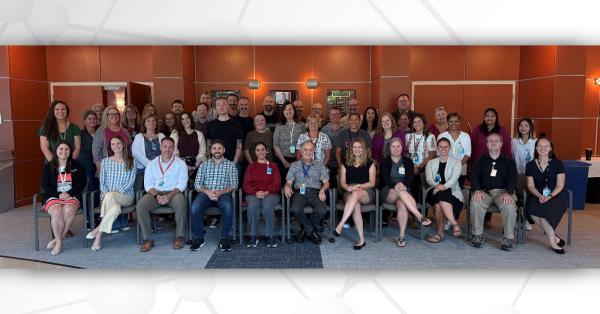Enteroviruses (EVs) and human parechoviruses (HPeVs) are primarily acquired during the period shortly before, during, and immediately after giving birth. EVs and HPeVs are two of the most frequent causes of neonatal viral sepsis, a disease with multiple symptoms including liver inflammation (hepatitis), excessive bleeding (coagulopathy), and inflammation of the heart muscle (myocarditis).
To learn more about the natural history of babies with EV and HPeV viral sepsis, the Congenital and Perinatal Infections Consortium (CPIC) is conducting a study, “Neonatal Enterovirus and Human Parechovirus Viral Sepsis: Natural History and Predictors of Morbidity and Mortality.” The team is investigating the causes and impact of neonatal viral sepsis on babies’ health.
Here, lead investigator David Kimberlin, MD, and study participant mother Jamie Theodore share more about the study and what it’s like to participate.
What are we learning about neonatal EV and HPeV viral sepsis from this study?
Dr. Kimberlin: Newborns with viral sepsis characterized by hepatitis, coagulopathy, and/or myocarditis suffer significant morbidity and mortality. This study is the first large, multi-state, prospective assessment of the viral causes of neonatal sepsis. We aim to accurately calculate the precise morbidity and mortality figures by viral pathogen in this highly vulnerable neonatal population.
How did you become involved with this study?
Theodore: My son Winston was diagnosed with hypoplastic right heart syndrome. When he was born, his medical team put in a patent ductus arteriosus (PDA) stent, and we were discharged. Twenty-four hours later, he had a cardiac arrest at home.
The medical team put him on extracorporeal membrane oxygenation (ECMO), and he just wasn't doing well. Five days later, we were able to get him off ECMO, but he was still having arrhythmias and very low blood pressure. When he tested positive for EV, we suspected that was causing myocarditis. Around this time, he was doing so poorly that we made a do-not-resuscitate (DNR) order. There didn’t seem to be much left to help him.
After a couple of days, we decided to try a treatment called pocapavir, and Winston slowly began to get better. When the medical team asked if we wanted to join the natural history study, we said, “Absolutely.”
How is this study contributing to clinical trial readiness?
Dr. Kimberlin: Several antiviral drugs with EV and HPeV activity are currently in development by pharmaceutical companies. More precise definition of rates of mortality and long-term morbidity associated with neonatal EV and HPeV sepsis will directly inform the endpoints and trial designs for these drugs as they progress through the pipeline. Additionally, identification of clinical and laboratory parameters that are biomarkers for adverse outcomes will directly inform the optimal design of therapeutic trials utilizing these new drugs.
Why did you decide to join this study?
Theodore: I’m a nurse practitioner at the University of Alabama at Birmingham, and I work with the doctors that took care of Winston—it’s a very small world! Dr. Claudette Poole printed out information on EV research studies for me. She said, “I feel like this is how you are going to understand this best.” And she was absolutely right. This natural history study is a way to see how we can help these babies.
What are the successes and challenges of this study?
Dr. Kimberlin: One challenge that we faced in the beginning of the study was the single institutional review board (IRB) requirement. While the National Institutes of Health (NIH) has mandated that all studies utilize a single IRB, the local IRBs are still performing a full review of the study prior to relying on the single IRB. This substantially slowed down the process for getting our sites activated for study enrollment.
The caveat to this has been the overall support and professionalism of the Cincinnati IRB team in facilitating the IRB process. Another challenge that we faced in the beginning was that babies were being discharged home with no plans to return to the hospital for follow-up, although the protocol required a return visit. We therefore modified the protocol to remove the requirement for subjects to complete the in-person study follow-up visits once they are discharged with no plans of returning to the enrolling hospital.
We have had a number of successes with the study. We have enrolled 43 subjects, with all but one having enrolled last year or this year. We have noted with interest that enrollments are occurring across all months, not just the late summer and fall that are more typically associated with EV circulation. This may reflect disruptions to viral seasonality from the pandemic and/or climate change. In addition, our sites have been very enthusiastic about identifying subjects for enrollment in this study.
What was it like to participate in this study?
Theodore: The team was incredible. A lot of different people consulted on him. They came by often, sometimes even just to chat. I only have positive feelings about it—I’m happy for Winston to be involved and contribute his data.
How will this study impact patients?
Dr. Kimberlin: This study will provide the needed data to develop endpoint and sample size calculations for future EV treatment trials. We are in communications with a drug manufacturer about utilizing the data learned from this study to create a Phase 1b/2a treatment trial in the near future.
In addition, by understanding the outcomes of neonatal EV sepsis in this population, our data will also allow for more precise counseling of families of babies in the future as they face the frightening impact of their neonate being hospitalized with a life-threatening EV infection.
How could this study impact Winston’s life?
Theodore: At this point, we are unsure how big of a role the pocapavir treatment played for Winston, who is now 4.5 months old. If this research can help all babies get access to the lifesaving treatment Winston had, I think that's really powerful and important work. We're just very grateful that he's home with us today.
“Neonatal Enterovirus and Human Parechovirus Viral Sepsis: Natural History and Predictors of Morbidity and Mortality” is currently enrolling. Learn more about the study and how to join here.
The Congenital and Perinatal Infections Consortium (CPIC) is part of the Rare Diseases Clinical Research Network (RDCRN), which is funded by the National Institutes of Health (NIH) and led by the National Center for Advancing Translational Sciences (NCATS) through its Division of Rare Diseases Research Innovation (DRDRI). CPIC is funded under grant number U54AI150225 as a collaboration between NCATS and the National Institute of Allergy and Infectious Diseases (NIAID).






